
Microphones: SPL & Distortion
In the eighth installment of his on-going series, Greg Simmons looks at SPL and distortion and discusses how they affect your microphone choice...
In the previous three installments we focused on the microphone specifications related to Sensitivity and Noise. A microphone’s Sensitivity specification is important to consider when capturing very quiet sounds or very loud sounds, while its Noise specification is important when capturing very quiet sounds or trying to make very quiet recordings. The emphasis has been on choosing a microphone that provides an output signal that lands somewhere within the preamplifier’s ‘Goldilocks Zone’ – high enough to create a useful signal level without introducing excessive noise, but low enough to avoid overloading the preamplifier’s input circuit and causing distortion.

The last two installments focused on minimising noise. In this installment we move to the other end of the level meter, looking at the specifications that matter when capturing loud sounds.
SPL & DISTORTION
The most quoted form of distortion found in microphone specifications is ‘clipping’ distortion due to sound energy overloading the microphone’s internal electronics, causing the reproduced signal to be clipped at the peaks and, therefore, distorted. The sound energy required to do this is specified in ‘SPL’, which stands for ‘Sound Pressure Level’; generally speaking, as we increase a sound’s SPL it becomes louder, so we can think of SPL as a way of indicating how loud a sound is at a known distance from the source. SPL values that don’t specify the distance from the sound source are meaningless unless the context makes the distance obvious.
A table of typical SPLs for musical instruments was given in the fifth installment of this series (Sensitivity); it’s repeated here for reference and convenience:
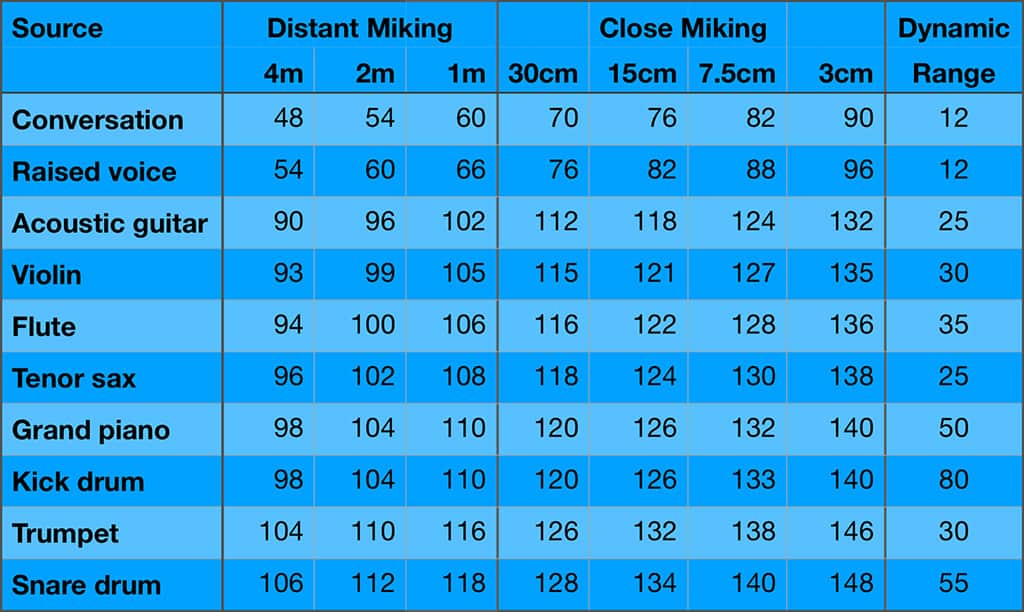
Passive ribbon microphones and passive dynamic microphones don’t contain any active circuitry to distort – although many contain transformers that could be overloaded and driven into saturation (a form of magnetic distortion), but that’s not likely to happen in a microphone unless it’s a very poor design or the transformer was specifically designed to saturate to provide a characteristic tonality. Also, the SPL required to distort a contemporary dynamic microphone’s diaphragm or a contemporary ribbon microphone’s ribbon element is considerably higher than those microphones would (or should!) ever be exposed to in normal use.
Many years ago Royer Labs released a promotional CD that included a recording made by Steve Albini comparing Royer Labs’ R121 ribbon microphone, Shure’s SM57 dynamic microphone and Coles’ 4038 vintage ribbon microphone on a loud electric guitar amplifier. The vintage ribbon microphone was obviously overloaded. To be fair, its design pre-dated the use of close-mics on loud guitar amplifiers so such an application was not in its design brief. Albini’s comparison remains valid, however, because it was made in the early days of the ribbon microphone revival when people were putting vintage ribbon microphones in front of loud guitar amplifiers and wondering why some of them sounded bad. You can listen to that recording here.
[Speaking of miking guitar amplifiers with ribbon mics, one popular technique places a Royer R121 aimed directly into the centre of the speaker’s dustcap (the small dome in the centre of the cone) and a Shure SM57 aimed at the point where the dustcap meets the cone. Aligning the SM57’s diaphragm with the R121’s ribbon element is vital for the best results. In response to the popularity of this technique, Royer Labs make the AxeMount dual microphone clip to simplify the alignment and set-up.]
It is unlikely that a contemporary passive dynamic or contemporary passive ribbon microphone (not a faithful recreation of a vintage model) would be driven into clipping distortion. The situation is different, however, with microphones that use powered electronic circuitry (condensers, active ribbons and active dynamics), where there is more potential for clipping.
MAXIMUM SPL
This specification ultimately represents the microphone’s ‘clipping point’, where the peak level of the signal exceeds the maximum level that the microphone can reproduce, causing the peaks of the signal to be clipped.

The vintage ribbon microphone was obviously overloaded.
The measurement concept is simple: play a sound into the microphone, increase the sound’s SPL until the microphone’s output signal shows a certain percentage of clipping, and measure the SPL that was required to reach that percentage of clipping. By choosing a percentage of distortion that is somehow meaningful – such as on the verge of being audibly noticeable – we can specify the ‘Maximum SPL’ required to reach that percentage of distortion.
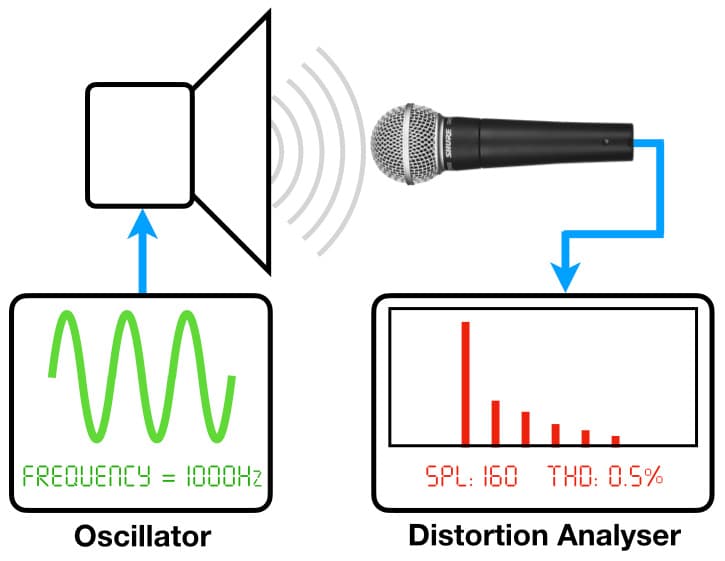
But what about the distortion itself? There are numerous forms of distortion in audio electronics; in this case we’re looking for something called ‘THD’. In contemporary use ‘THD’ stands for ‘Total Harmonic Distortion’, where a ‘harmonic’ is defined as an integer (i.e. whole number) multiple of the fundamental frequency. A sine wave is used as the test sound because it’s the only waveform that contains a single frequency; it does not contain any partials, overtones or harmonics, and is therefore the most ‘pure’ of all waveforms – which is why it is used for so many audio-related tests and measurements. It is played into the microphone and its SPL is increased until clipping occurs; at this point the waveform is no longer a pure sine wave and will therefore contain other frequencies that have been introduced by the clipping process.
Because the introduced frequencies are caused by clipping the original signal, they must all be frequencies that can fit complete cycles into one cycle of the original signal – in other words, their waveforms must all pass through the same zero points as the original signal’s waveform (they cannot be any other value but zero when the original signal is at zero). This means they must all be integer multiples of the original frequency, and are therefore harmonics. If we can measure the combined level of all the harmonics introduced by clipping distortion and compare it against the level of the original sine wave, we can determine a THD (Total Harmonic Distortion) figure and express it as a percentage. Knowing this and the SPL, we can specify a Maximum SPL that will create a known percentage of THD.
A sine wave with a frequency of 1kHz is used as the test signal. Because harmonics are whole number multiples of the test signal’s frequency, we know they will occur at 2kHz (2 x 1000), 3kHz (3 x 1000), 4kHz (4 x 1000), 5kHz (5 x 1000) and so on.
The microphone’s output signal is fed into a distortion analyser that compares the total level of all the harmonics against the level of the 1kHz test signal and expresses the difference as a percentage. By adjusting the SPL to reach the desired percentage of distortion, we get a Maximum SPL specification with a qualifying percentage of Total Harmonic Distortion, for example ‘Maximum SPL = 140dB at 1% THD’
Distortion is ultimately subjective so it is important to define the percentage of distortion that’s being used as the reference for the SPL measurements – and this is where things start going awry with specifications (as mentioned in the ‘Numbers Game’ section of the fifth installment of this series) because different manufacturers use different percentages and definitions.
Some manufacturers use higher THD percentages than others, allowing higher (and therefore more impressive) SPL values to be quoted, while simultaneously making it difficult to make meaningful SPL comparisons with microphones from other manufacturers.
Some manufacturers define ‘THD’ as ‘Third Harmonic Distortion’ rather than ‘Total Harmonic Distortion’. It’s an ‘old school’ form of measurement that could result in a different Maximum SPL figure because it only measures the level of the third harmonic component of the distortion, rather than the combined total of all the harmonic components. It could be argued that the third harmonic is the most dominant harmonic in clipping distortion and the contribution of the others is insignificant in comparison, and that’s valid from an objective measurement perspective. The subjective perspective, however, is that human hearing is more sensitive to some forms of harmonic distortion that it is to others. Rupert Neve wrote about the audibility of individual harmonics within Total Harmonic Distortion in the first installment of his four-part series for AudioTechnology, and noted that human hearing is significantly more sensitive to seventh harmonic distortion than it is to third harmonic distortion – which makes a good argument for measuring and specifying the total harmonic distortion rather than just the third harmonic. (Specifying the percentage of each individual harmonic would provide the most detailed information, but that’s probably asking too much…) Rupert Neve’s column is fascinating reading, and helps us understand why audio devices with similar percentages of Total Harmonic Distortion can sound quite different. The graph below is based on his data.

The Maximum SPL of these four mics can be compared because they all use the same reference…
Neumann uses the term ‘Maximum SPL’ and specifies it as the SPL that results in 0.5% THD (Total Harmonic Distortion). Their TLM103 large diaphragm condenser has a Maximum SPL of 138dB at 0.5% THD, as does their KM184 small diaphragm condenser. Schoeps also uses 0.5% THD; their MK4 capsule fitted to their CMC6 body has a Maximum SPL of 131dB at 0.5%. Aston’s Stealth active dynamic has a Maximum SPL of 140dB for 0.5% THD. The Maximum SPL of these four mics can be compared because they all use the same reference of 0.5% THD with a 1kHz sine wave. If we were looking for a mic specifically for capturing very high SPLs and we had to choose from those four, Aston’s Stealth is the best option at 140dB SPL, although Neumann’s TLM103 and KM184 are close behind it at 138dB SPL each, while Schoeps MK4/CMC6 combo is a fair way behind at 131dB SPL. (The threshold of pain in the human ear is 130dB SPL, so for most applications the Schoeps is no slouch either.)
DPA also uses the term ‘Maximum SPL’ in their specifications; their 4006A small diaphragm omni condenser has a Maximum SPL of 146dB, which seems very impressive compared to the mics mentioned above until you notice that it’s specified at 10% THD. We cannot compare DPA’s ‘Maximum SPL’ against the ‘Maximum SPL’ figures given above from Neumann, Schoeps and Aston because DPA measures at 10% THD and the others measure at 0.5%. This type of distortion is, by definition, ‘non linear’ – among other things, that means we cannot mathematically extrapolate comparable SPL figures based on the difference between the THD percentages. DPA’s chosen level of 10% THD is 20 times higher than the 0.5% THD used by Neumann and others mentioned above, but that does not mean we can divide DPA’s Maximum SPL figure by 20 to make a comparable figure to Maximum SPLs measured at 0.5%.
A more comparable figure from DPA can be found in the specification they call ‘Distortion’, which quotes an SPL measured at 1% THD and therefore should be comparable with the ‘Maximum SPL’ specifications from other manufacturers that also use 1% THD, such as Audio-Technica, Milab, Sanken and Sony.
If you were in the market for a small single diaphragm omnidirectional condenser and had narrowed your choices down to DPA’s 4006A, Neumann’s KM183, Audio-Technica’s AT4022 and Earthworks QTC30, you’d have a hard time determining which one has the highest Maximum SPL capability based on the figures called ‘Maximum SPL’ on their websites. DPA quotes 146dB SPL at 10% THD for the 4006A, Neumann quotes 140dB SPL at 0.5% THD for the KM183, and Audio-Technica quotes 146dB SPL at 1% THD for the AT4022. Earthworks avoids the ‘Maximum SPL’ terminology altogether, preferring ‘Maximum Acoustic Input’; their QTC30 has a Maximum Acoustic Input of 140dB SPL but no THD percentage is given, rendering it meaningless except for comparisons with other microphones in their product range and assuming they use the same measuring technique for all of their microphones. None of these figures can be compared against each other in any meaningful manner.
Royer’s R121 passive ribbon microphone has a quoted Maximum SPL of >135dB at 20Hz, while its active counterpart measures 135dB at 30Hz. No doubt Royer will have their reasons for using these specific and differing frequencies (20Hz and 30Hz) rather than the industry standard of 1kHz, but in both cases there is no mention of a THD percentage. The values are meaningless for comparing against competing products, and, because they are measured at different frequencies, they might even be irrelevant for comparisons within Royer’s own product range.
None of these figures can be compared against each other in any meaningful manner.
Internal Electronics
The above cynicisms aside, let’s get back to DPA’s 4006A because it also serves as a good example of the effect of the electronics used in the microphone’s body, and particularly in modular systems where capsules and microphone body/preamps can be interchanged. The 4006A uses their MMC4006 omnidirectional capsule (the same capsule that’s recording the sounds on the surface of Mars with the Perseverance rover – a fact that DPA is rightly proud of) fitted to their MMP-A preamp body.
It’s hard to tell what fraction of the ‘Maximum SPL’ and ‘Distortion’ figures given earlier is due to the MMC4006 diaphragm/capsule and what fraction is due to the MMP-A electronics, but we can gain some insight by comparing their 4006A against their 4006C – which uses the same MMC4006 diaphragm/capsule fitted to the lower cost and considerably smaller MMP-C preamp body.

The 4006C’s Maximum SPL is 7dB lower than the 4006A’s, and the SPL given in its Distortion specification is 5dB lower. Considering that both mics use the same MMC4006 diaphragm, it’s clear that the 4006C’s reduced SPL capabilities are due to differences in the electronics between the MMP-A and the MMP-C. It’s also worth noting that the 4006A and 4006C offer the same Sensitivity and Self Noise, so the only trade-offs for the MMP-C’s smaller body and lower price are its reduced SPL handling and the resulting smaller Dynamic Range (see below). Oh, and the 4006C does not have an internal pad…
Internal Pads
Many microphones with active electronics include an internal pad to prevent or minimise the chance of overloading and clipping the microphone’s internal electronic circuitry, and thereby give the microphone a higher Maximum SPL handling capability. The concept is simple; an attenuator (pad) is placed between the output of the diaphragm and the input of the microphone’s internal electronics, as shown below. How it’s done in practice varies from manufacturer to manufacturer, but the goal is to prevent the diaphragm’s output signal from overloading the microphone’s internal electronics.
It’s also helpful in situations where the signal coming out of the microphone is too high for the input of the preamplifier and causes clipping, but that’s not its primary purpose. If the signal from your microphone is overloading the input of your preamplifier, you need either a microphone with lower Sensitivity, a preamplifier with a pad switch on its input, or a preamplifier with sufficiently low gain and/or high enough headroom that it doesn’t need a pad on its input. Using the microphone’s pad switch when it’s not necessary should be a last resort because it reduces the level of the signal entering the microphone’s internal electronics (the primary noise source when using condenser microphones, as discussed in the previous two installments of this series), thereby reducing the S/N Ratio by making the Self Noise more significant relative to the signal level.

Neumann’s U87 offers a -10dB pad, AKG’s C414XLS offers three pad levels (-6dB, -12dB and -18dB), while Røde’s NT2000 offers a rotary pad control that’s continuously variable from 0dB to -10dB. DPA’s MMP-A, and some of their earlier microphones, offer a press-button -20dB pad that’s cleverly concealed inside the XLR socket and operated with the tip of a pen. [If you own an MMP-A and didn’t know about its pad switch, you’ve just learnt the meaning and value of ‘RTFM’.]
Mics with built-in pad switches often provide multiple figures for SPL handling and related specifications; one value with the pad switched off, and one or more other values with the pad(s) switched on. The difference in the Maximum SPL values is usually a reflection of the amount of attenuation offered by the pad switch. For example, AKG’s 414XLS has a quoted Maximum SPL value of 140dB without a pad, 146dB with the -6dB pad, 152dB with the -12dB pad, and 158dB with the -18dB. Similarly, Neumann’s U87 Ai offers a Maximum SPL of 117dB which increases to 127dB with the -10dB pad switched in. Note that the changes in Maximum SPL mirror the changes in pad levels.
High Voltage Mics & Mods
As we saw with the comparison between DPA’s 4006A and 4006C above, the Maximum SPL of most condenser microphones is determined by the limits of their electronic circuitry. Some condenser microphone manufacturers, such as DPA and Sonodore, offer high voltage versions of their microphones that require external power supplies rather than using phantom power. Rens Heijnis of Sonodore also offers modifications to selected microphones from other manufacturers to allow them to run on higher voltages, again provided by an external power supply rather than phantom power. (For the most accurate sound reproduction it is important that these external DC power supplies provide ‘stiff’ DC voltages, as explained in the next installment of this series.)
Preamplifier manufacturer Millennia Media offers a high voltage option on some of their preamplifiers to cater for some of the high voltage microphones on the market, avoiding the need for an external power supply.
Among other things the higher voltage usually allows a higher Maximum SPL, which, in turn, gives the microphone more of the next specification…
DYNAMIC RANGE
In audio terms, Dynamic Range is defined as the difference between the highest and lowest sound levels a device can reproduce faithfully, expressed in decibels. The highest sound level is determined by the point where clipping distortion begins, and the lowest sound level is determined by the device’s Noise Floor (i.e. the level of its inherent noise).
Dynamic Range is not a reliable specification for making microphone comparisons because different manufacturers use different ways of defining the limits. As we’ve seen above, there are numerous ways a manufacturer can measure and specify the highest SPL a microphone can capture and reproduce – which determines the upper limit of the Dynamic Range. A similar problem exists when specifying the lower limit of the Dynamic Range, which is ultimately determined by the microphone’s noise. As we saw in the previous two installments, noise itself is a difficult parameter to measure and specify in any meaningful manner.
With some simple maths we can usually work out which SPL and noise figures any given microphone manufacturer is using, because at a fundamental level the formula is:
Dynamic Range = Distortion Level – Noise Level
As an example, DPA’s 4060 with Core electronics offers a quoted Dynamic Range of 106dB, which can be found between its Distortion specification (peak SPL handling for <1% THD) of 129dB and its Self Noise of 23dBA.
4060 Dynamic Range = 129dB – 23dB = 106dB
In comparison, their 4062 is essentially the same microphone optimised for working with louder sounds. Among other things, its Sensitivity has been lowered from 20mV/Pa to 1mV/Pa (a drop of 26dB), making it less likely to overload the input circuitry of a preamplifier when capturing very high SPLs. It shares the same 106dB of Dynamic Range as the 4060, but its Distortion specification (peak SPL handling for <1% THD) is 10dB higher than the 4060 (139dB vs 129dB) and so is its Self Noise (33dBA vs 23dBA). In essence, the SPL and noise specifications have been shifted up by 10dB but the Dynamic Range remains the same.
4062 Dynamic Range = 139dB – 33dB = 106dB
Both mics have the same Dynamic Range but offer different Sensitivity, Self Noise and distortion figures, making them suitable for different applications. And because they are essentially the same microphone (the 4062 appears to be electronically offset 10dB above the 4060), they should both have the same tonality; putting one of each side-by-side and switching or crossfading between them as necessary would capture a wider Dynamic Range (116dB) than either mic offers on its own, hopefully without any significant tonal differences other than a shift in noise level.
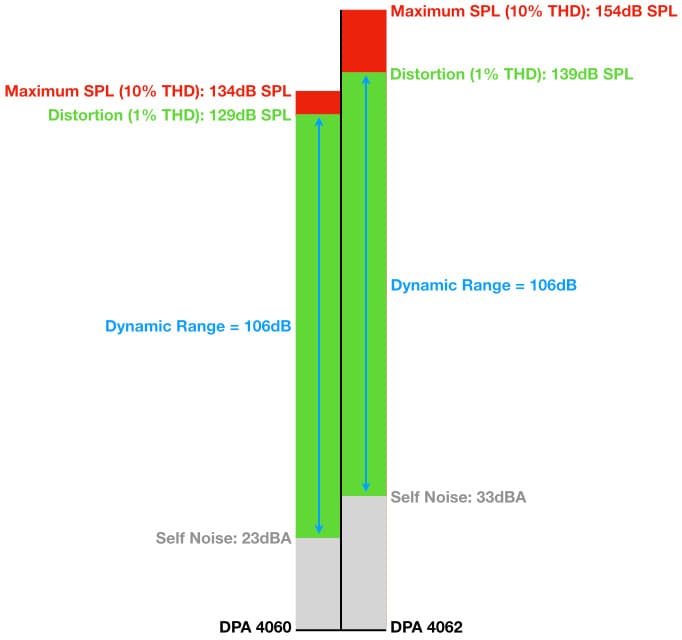
As shown above, Dynamic Range is a relative figure that’s derived mathematically from the measured specifications related to noise and distortion. Rather than focusing on Dynamic Range when choosing a microphone, it’s more important to choose the right combination of Sensitivity, Noise and Maximum SPL for the application. The importance of this is highlighted in the above comparison of DPA’s 4060 and 4062. Both mics have the same Dynamic Range but very different Sensitivities, Self Noise levels and Maximum SPL capabilities. Each is suited to a different application – if Dynamic Range was your only selection criteria then both microphones would appear to be the same and you could easily choose the wrong microphone for the job. For example, if you chose the 4062 for a job that was better suited to the 4060, you’ll end up with 10dB more Self Noise from the microphone itself, plus whatever noise the preamplifier contributes because the 4062 requires 26dB more gain than the 4060 to create the same output level from the same signal at the microphone.
Over The Top
Conceptually, a microphone with a larger Dynamic Range is more versatile than a microphone with a smaller Dynamic Range because it can handle a wider range of levels between its noise and its clipping level. In practice, however, sound engineers and recording musicians are rarely required to capture anything with more Dynamic Range than the typical microphone offers – which is probably why some manufacturers don’t quote any Dynamic Range specifications on their websites.
According to the table of SPLs provided earlier in this installment, a kick drum has a Dynamic Range of 80dB. That’s well within the Dynamic Range of most microphones; what’s more important is whether the microphone’s Maximum SPL is high enough to deal with being placed 7.5cm in front of the beater (a typical placement for popular music), where the SPL can exceed 130dB. For example, Schoeps’ MK4/CMC6 combo and DPA’s 4062 can both easily handle 80dB of Dynamic Range, but with a Maximum SPL of 131dB SPL (1% THD) and a Sensitivity of 15mV/Pa, the Schoeps would be reaching the limits of its internal electronics while also outputting a signal level that would possibly upset some padless preamps. Meanwhile, with a maximum SPL of 139dB (1% THD) and a Sensitivity of 1mV/Pa, DPA’s 4062 would remain comfortably within its limitations while presenting a significantly less threatening signal to the preamplifier. However, place the same two microphones on a brush-scraped snare in a jazz piece and the signal from the Schoeps would come out shining while the signal from the DPA would be hard to identify against the mic’s Self Noise and the preamplifier’s noise.
SPL & MICROPHONE CHOICE
When capturing very loud sounds we have to move the emphasis away from microphone and preamplifier combinations that deliver the most tonally pleasing result and towards those that minimise the risk of clipping. There are apps and plug-ins that can repair a clipped audio file but, as with removing noise, it’s another layer of work to do and the results are not always perfect. Mild clipping is easier and faster to repair than removing noise, but the best solution is always prevention. If you don’t want clipping to ruin the party, don’t invite it.
When capturing a sound that has a high SPL, choose a microphone with a high Maximum SPL and low Sensitivity. The high Maximum SPL will mean there is less chance of the microphone overloading or clipping, while the low Sensitivity will reduce the possibility of overloading the input circuit of the preamplifier. Ideally, you would also choose a preamplifier capable of accepting high input levels while still allowing some gain control (i.e. so the gain is not at minimum), which means it will probably have a -20dB pad switch on the input.
This is definitely an application for a small diaphragm condenser, a passive dynamic or a passive ribbon microphone – as long as it can handle the high SPL of the sound source. The associated low Sensitivity won’t be a problem because a loud sound source creates enough SPL to ensure a healthy level out of the microphone and into the preamplifier, minimising noise along the way.
PRESSING ON…
Over the last four installments (including this one) we’ve looked at a number of microphone and preamplifier specifications related to signal levels, all with an emphasis on reducing noise and minimising the possibility of clipping in our signals. In the next installment we’ll look at some other specifications and concepts related to signal levels – including Mic Level, Line Level, Headroom and Nominal Operating Level – and see how they interact and how they can help us to choose the right microphone to land our signals in the preamplifier’s Goldilocks Zone. We’ll also see how to tweak levels to make quieter recordings with less chance of clipping…













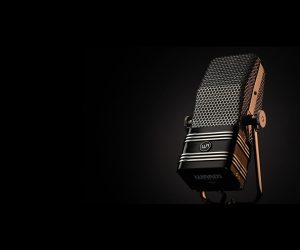

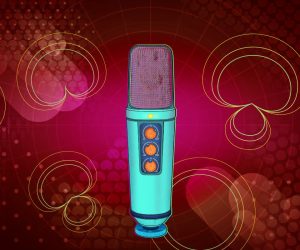


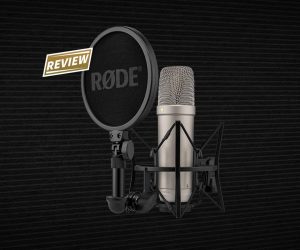




Great well written article Greg, thank you!
Thank you Safa, I’m glad you enjoyed it. There’s more to come, of course…
Hi Greg, great article and great series, I’m reading it carefully. In this particular article, the examples you gave about DPA are very enlightening and I believe that DPA is one of the brands that most use the publication of numbers at their convenience. (figures and data that confuse the inexperienced) as it happened to me, since I have three microphones of this brand.
It was very enlightening to see how they publish a figure for the maximum peak SPL before clipping, and another for the total harmonic distortion at 1%, which was not clear to me and is obvious, and that is that at 1% there is already distortion total harmonic, because the microphone circuit no longer tolerates more spl.